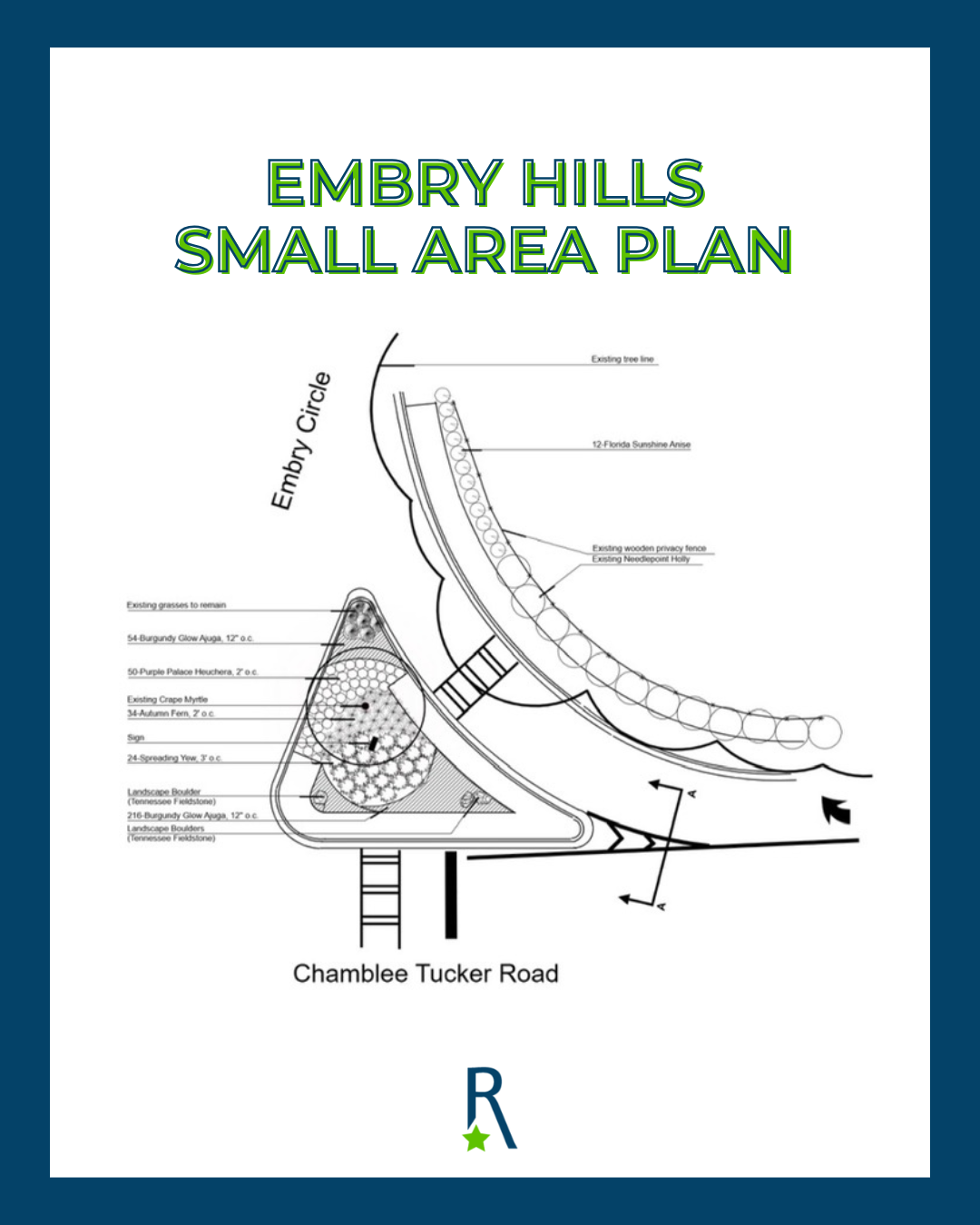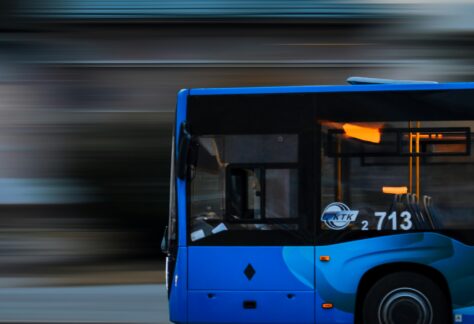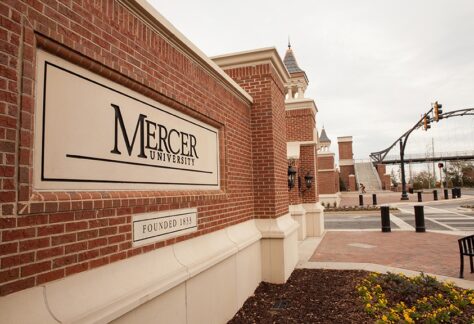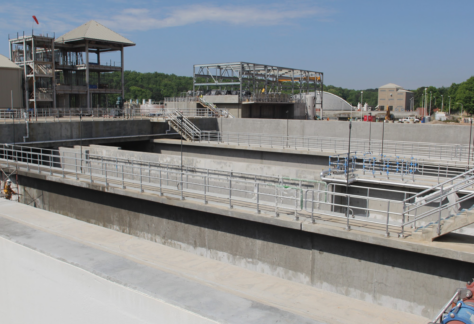Embry Hills, a post-World War II community in northeast DeKalb County, is still a community on the rise, 70 years after it first was developed. People in metropolitan Atlanta continue to be attracted to this area for its proximity to jobs, shopping, recreation, and easy access to interstates. But this growth also brings challenges such as traffic, security, and a need to manage smart business development. All of these can be addressed through a land use plan tailored to this community.
Embry Hills has been actively engaging residents in the process of reshaping its future. This proactive approach is driving a series of forward-thinking initiatives designed to enhance quality of life, safety, and connectivity for the area’s residents and businesses.
Legacy of Historic Post World War II Community
Embry Hills is located inside I-285 and is bounded by I-85 to the northwest and Henderson Mill Creek to the south. The neighborhood is a quintessential example of DeKalb’s post-World War II planned suburban communities, according to the DeKalb History Center. Originally built in the 1950s, with ranch homes, a social and athletic club, churches, and schools, Embry Hills has been attracting Georgia workers and middle-class families ever since.
When DeKalb County saw a boom in industrial development after World War II, this community experienced a substantial increase in subdivision and suburban growth as industries such as Frito-Lay, Eastman Kodak, and General Motors moved plants and offices into the area.
Today, Embry Hills is at Atlanta’s Perimeter, an area which has attracted thousands of companies, jobs, and new residents as well as redevelopment. Embry Hills needed a new vision and plan for the future.
Small Area Plan: A Comprehensive Vision for Growth
The community recently won approval for its Small Area Plan (SAP), a comprehensive roadmap for growth and improvement that reflects both the aspirations and practical needs of this vibrant community. These plans allow policy makers and the community to guide development, policies, and investments at a much finer level of detail than can be provided in the overall comprehensive plan.
On Oct. 1, 2024, the SAP was approved by the DeKalb County Commission. This strategic document will guide Embry Hills’ growth over the coming years, ensuring that future development aligns with the community’s values and needs. The plan addresses a broad range of areas, including transportation infrastructure, housing, local amenities and economic development, all aimed at enhancing the livability of Embry Hills.

“The Small Area Plan is more than just a document,” Commissioner Robert Patrick, a champion of community-based planning said, emphasizing the importance of a collective vision. “It’s a reflection of what this community wants to become. By working together, we will address current challenges while paving the way for future opportunities.”
Set to kick off in quarter one of 2025, the SAP will harness the community’s focus on a range of priorities, from roadways and pedestrian-friendly infrastructure to the development of public spaces that foster community engagement. This planning effort also recognizes the need to balance growth with the preservation of Embry Hills’ unique character, ensuring that the community remains a desirable place to live and work as it evolves.
Community Patrol: Enhancing Safety Through Engagement
Alongside the SAP, community engagement around safety remains a top priority. A Community Patrol meeting, held September 16, 2024, offered a platform for residents to discuss safety concerns and propose solutions. The meeting showcased a deep sense of civic responsibility as residents voiced their views on issues such as neighborhood watch programs, increased patrols, and better street lighting.
These discussions are not merely symbolic; they are driving concrete actions. The next step involves submitting residents’ recommendations to the administration for review and potential implementation. “When residents actively participate in conversations about safety, it strengthens the entire community. Their input is invaluable, and it ensures that the solutions we pursue are rooted in real, lived experiences,” added Patrick.
Top End Value Capture for I-285 Bus Rapid Transit and Trails
Beyond the local initiatives, a broader I-285 Bus Rapid Transit (BRT) and Trails Funding Study has the potential to reshape how Embry Hills and neighboring communities connect to the region. Approved by DeKalb County Board of Commissioners on February 14, 2024, the study will provide insights into potential funding options for the community’s transportation vision for the area. The Georgia Department of Transportation Peach Pass lanes will offer express lanes which can accommodate BRT and will be located mostly within the existing I-285 right of way. This will result in drive times between Tucker/Northlake and Cumberland Community Improvement District of just 45 minutes.
The Trail component will look into funding options for a trail network similarly paralleling I-285 and connecting to the Peachtree Creek Greenway.
At the heart of the BRT and trails project is a study, currently being conducted by KB Advisory Group, which is tasked with exploring public funding options for the construction of transit stations and related infrastructure. The $70,000 study, expected to be completed in mid-2025, will identify funding sources that could accelerate the development of this critical transportation network. It also explores opportunities for expanding trail systems, connecting neighborhoods with recreational spaces and supporting alternative transportation methods like biking and walking.
Commissioner Patrick is enthusiastic about the transformative potential of the BRT system: “This project is more than a transportation solution. It’s a key to unlocking economic growth and improving quality of life by making our communities more accessible and connected.”
The Economic and Social Impact of the BRT
The BRT system is poised to deliver significant economic and social benefits to District 1 DeKalb County, Embry Hills and the surrounding region. By providing faster, more reliable public transit, the BRT will reduce travel times for commuters, alleviate road congestion and decrease the environmental impact of car-dependent commuting. This transit system will also promote regional economic growth by making it easier for workers to access employment hubs and for businesses to reach new markets.
In addition to these immediate benefits, the BRT study’s focus on “value capture” offers a forward-thinking approach to funding. Value capture strategies leverage the increase in property values that often occurs near major transit projects to fund the development of transit infrastructure. In other words, as Embry Hills becomes more accessible and attractive, the resulting growth in property values can help fund future investments in the community.
And this is just the beginning. “As we move forward, we’re not just investing in transit. We’re investing in the long-term prosperity of Embry Hills and beyond,” added Patrick.
Looking Ahead: A Shared Vision for a Brighter Future
The recent progress in Embry Hills, from the approval of the SAP to the advancement of the BRT system, highlights the power of collaboration and strategic planning. These initiatives reflect a shared vision for a community that is safer, more connected and more vibrant, so that all residents can thrive.
Commissioner Patrick’s leadership, coupled with the active involvement of Embry Hills residents, underscores a commitment to progress that is both thoughtful and inclusive. As these projects move forward, Embry Hills is well-positioned to navigate the challenges of growth while ensuring that the needs of its people remain at the forefront of every decision.







